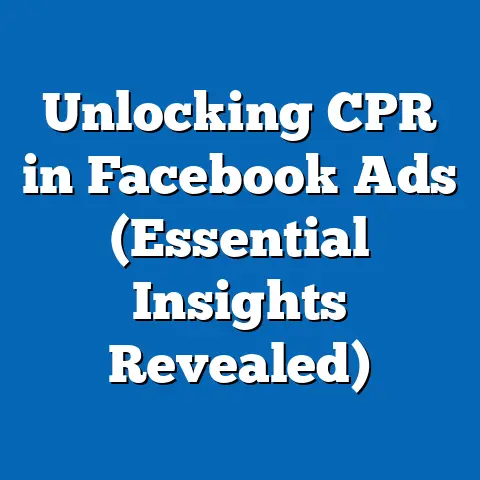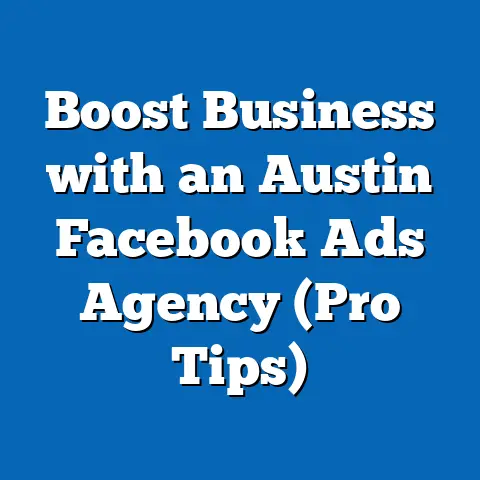Reopen Disabled Facebook Ad Account (Proven Strategies)
Imagine this: You’re sitting at your desk, coffee in hand, ready to conquer the day. Your online store is buzzing, thanks to the targeted Facebook ads you’ve meticulously crafted. Sales are climbing, and you can almost taste the sweet success you’ve been working towards. Then, BAM! A jarring notification pops up: “Your Facebook Ad Account has been disabled.”
The air thickens. Your heart pounds. Panic sets in. The hum of your computer suddenly feels deafening, a stark contrast to the vibrant energy that filled the room just moments ago. This isn’t just a technical glitch; it’s a potential business catastrophe.
I’ve been there. I’ve felt that gut-wrenching feeling when a seemingly overnight success story is put on hold by a single, dreaded notification. I’ve seen businesses large and small brought to a standstill, their marketing engines silenced, their revenue streams drying up.
The stakes are high. Your Facebook ad account isn’t just a tool; it’s a lifeline to your customers, a bridge to your audience, and a crucial component of your business’s growth. Understanding how to navigate the complexities of Facebook’s policies and, more importantly, how to reopen a disabled account is no longer optional; it’s essential for survival in today’s digital landscape.
This guide is your roadmap. It’s born from my own experiences, the lessons I’ve learned, and the countless hours I’ve spent navigating the intricate world of Facebook advertising. It’s designed to equip you with the knowledge and strategies you need to not only reopen your disabled account but also prevent future disruptions and build a sustainable, compliant advertising strategy.
Let’s get started.
Understanding Facebook Ad Account Disabling
Before diving into the recovery process, it’s crucial to understand why Facebook disables ad accounts in the first place. Think of it like understanding the “why” behind a medical diagnosis before you can start treatment.
Overview of Why Accounts Get Disabled
Facebook’s primary goal is to create a safe and positive experience for its users. To achieve this, they enforce strict advertising policies designed to prevent misleading, harmful, or offensive content. When an ad account violates these policies, Facebook may disable it to protect its users.
Here are some of the most common reasons for ad account disablement:
- Policy Violations: This is the most frequent culprit. Facebook’s advertising policies are extensive and cover a wide range of topics, including prohibited content (like hate speech or deceptive practices), restricted content (like ads promoting alcohol or gambling), and personal attributes (ads cannot discriminate based on race, religion, gender, etc.). Even unintentional violations can lead to account disablement.
- Suspicious Activity: Facebook’s algorithms are designed to detect suspicious activity that could indicate fraudulent or malicious behavior. This might include sudden spikes in ad spend, unusual login locations, or multiple failed payment attempts.
- Payment Issues: Problems with your payment method, such as an expired credit card, insufficient funds, or discrepancies in billing information, can also trigger account disablement.
- Low Ad Quality: If your ads consistently receive negative feedback from users, such as being reported for being spammy or irrelevant, Facebook may disable your account to protect its user experience.
- Circumventing Systems: Attempting to bypass Facebook’s ad review process or using cloaking techniques to show different content to Facebook than to users is a surefire way to get your account disabled.
- Unusual Ad Characteristics: Using deceptive tactics or misleading claims can cause Facebook to disable your account.
It’s important to note that Facebook’s algorithms are constantly evolving, and sometimes, even legitimate businesses can get caught in the crossfire.
Did you know? According to a study by Social Media Examiner, nearly 60% of marketers have experienced some form of Facebook ad account suspension or disablement. This highlights the prevalence of the issue and underscores the importance of understanding and adhering to Facebook’s policies.
The Impact of a Disabled Account
The impact of a disabled ad account can be devastating, especially for businesses that rely heavily on Facebook advertising for their revenue. It’s like having the rug pulled out from under you.
Here’s a breakdown of the potential consequences:
- Financial Implications:
- Lost Revenue: A disabled ad account means no more ads, which can lead to a significant drop in sales and revenue.
- Wasted Ad Spend: If your account was disabled mid-campaign, you might lose the remaining budget allocated to those ads.
- Delayed Product Launches: If you were planning a product launch or promotion, a disabled account can throw your entire timeline off course.
- Operational Disruptions:
- Marketing Strategy Interruption: Your entire marketing strategy may need to be reevaluated and adjusted, which can be time-consuming and costly.
- Loss of Momentum: It can be difficult to regain the momentum you had before the account was disabled, especially if you were running a successful campaign.
- Emotional Stress:
- Frustration and Anxiety: Dealing with Facebook’s support team can be frustrating, and the uncertainty of whether your account will be reinstated can cause significant anxiety.
- Feeling Overwhelmed: Navigating Facebook’s complex policies and procedures can be overwhelming, especially if you’re not familiar with the platform.
- Lost Revenue: A disabled ad account means no more ads, which can lead to a significant drop in sales and revenue.
- Wasted Ad Spend: If your account was disabled mid-campaign, you might lose the remaining budget allocated to those ads.
- Delayed Product Launches: If you were planning a product launch or promotion, a disabled account can throw your entire timeline off course.
- Marketing Strategy Interruption: Your entire marketing strategy may need to be reevaluated and adjusted, which can be time-consuming and costly.
- Loss of Momentum: It can be difficult to regain the momentum you had before the account was disabled, especially if you were running a successful campaign.
- Frustration and Anxiety: Dealing with Facebook’s support team can be frustrating, and the uncertainty of whether your account will be reinstated can cause significant anxiety.
- Feeling Overwhelmed: Navigating Facebook’s complex policies and procedures can be overwhelming, especially if you’re not familiar with the platform.
I remember working with a small e-commerce business that specialized in handmade jewelry. Facebook ads were their primary source of traffic and sales. When their ad account was disabled due to a misunderstanding of Facebook’s policy on personal attributes (they accidentally targeted ads based on perceived age), their sales plummeted by 80% within a week. The owner, a single mom, was devastated and felt like her entire livelihood was at risk.
This story is not unique. Many businesses, especially small businesses, are heavily reliant on Facebook ads, and a disabled account can have a catastrophic impact on their operations.
Key Takeaway: Understanding the potential impact of a disabled ad account is the first step in preparing yourself to navigate the recovery process. It’s also a strong motivator to proactively prevent future disablements.
The Step-by-Step Process to Reopen Your Disabled Account
Okay, so your ad account is disabled. Take a deep breath. Don’t panic. While it feels like the end of the world, it’s not. I’ve seen countless accounts successfully reinstated, and with the right approach, yours can be too.
Initial Response
The first few hours after receiving the dreaded notification are crucial. Here’s what you should do immediately:
- Don’t Panic (Easier Said Than Done, I Know): Resist the urge to lash out at Facebook or make rash decisions. Stay calm and approach the situation methodically.
- Review the Notification: Carefully read the notification from Facebook. It should provide some indication of why your account was disabled. Pay close attention to any specific policy violations mentioned.
- Access the Account Quality Dashboard: This is your central hub for understanding the status of your ad account and initiating the appeal process. You can find it by going to your Ads Manager and clicking on “Account Quality” in the left-hand menu.
- Understand the Reason for Disablement: The Account Quality dashboard will provide more detailed information about the specific reason for the disablement. It might be a general policy violation, a specific ad that violated the rules, or a payment issue.
- Acknowledge the Issue (Even if You Disagree): Even if you believe the disablement was a mistake, acknowledge the issue in your initial communication with Facebook. This shows that you’re taking the situation seriously and are willing to cooperate.
Pro Tip: Take screenshots of the notification and the Account Quality dashboard. This will serve as valuable documentation if you need to escalate the issue later.
Gathering Necessary Documentation
Before you file an appeal, make sure you have all the necessary documentation ready. This will streamline the process and increase your chances of success.
Here’s a checklist of documents and information you might need:
- Business Verification Documents:
- Proof of Business Registration: This could be your business license, articles of incorporation, or other official documents that verify your business’s legal existence.
- Proof of Address: A utility bill, bank statement, or other document that shows your business’s physical address.
- Tax Identification Number (TIN): Your business’s TIN or Employer Identification Number (EIN).
- Ad Performance Data:
- Examples of Your Best-Performing Ads: This shows Facebook that you’re running legitimate ads that resonate with your audience.
- Campaign Performance Reports: These reports provide data on your ad spend, reach, and conversions, demonstrating your commitment to responsible advertising.
- Communication History with Facebook:
- Any Previous Correspondence with Facebook Support: This includes emails, chat logs, or support tickets related to your ad account.
- Personal Identification (If Required):
- Government-Issued Photo ID: In some cases, Facebook may require you to provide a copy of your driver’s license, passport, or other government-issued ID to verify your identity.
- Explanation of the Issue:
- A Clear and Concise Explanation of Why You Believe the Disablement Was a Mistake: This is your opportunity to present your case and explain why you think your account should be reinstated.
- Proof of Business Registration: This could be your business license, articles of incorporation, or other official documents that verify your business’s legal existence.
- Proof of Address: A utility bill, bank statement, or other document that shows your business’s physical address.
- Tax Identification Number (TIN): Your business’s TIN or Employer Identification Number (EIN).
- Examples of Your Best-Performing Ads: This shows Facebook that you’re running legitimate ads that resonate with your audience.
- Campaign Performance Reports: These reports provide data on your ad spend, reach, and conversions, demonstrating your commitment to responsible advertising.
- Any Previous Correspondence with Facebook Support: This includes emails, chat logs, or support tickets related to your ad account.
- Government-Issued Photo ID: In some cases, Facebook may require you to provide a copy of your driver’s license, passport, or other government-issued ID to verify your identity.
- A Clear and Concise Explanation of Why You Believe the Disablement Was a Mistake: This is your opportunity to present your case and explain why you think your account should be reinstated.
Why is this important? Having all this documentation ready shows Facebook that you’re a legitimate business owner who is serious about resolving the issue. It also makes it easier for them to review your appeal and make a decision.
Filing an Appeal
Once you’ve gathered all the necessary documentation, it’s time to file an appeal. This is your opportunity to present your case to Facebook and convince them to reinstate your account.
Here’s a step-by-step guide on how to file an appeal:
- Go to the Account Quality Dashboard: As mentioned earlier, this is your central hub for managing your ad account status.
- Find the “Disabled Ad Account” Section: You should see a section that indicates your ad account is disabled and provides a link to appeal the decision.
- Click on “Request Review”: This will take you to the appeal form.
- Provide a Detailed Explanation: This is the most important part of the appeal process. In this section, you need to explain why you believe your account was disabled in error. Be clear, concise, and professional.
- Acknowledge the Issue: Start by acknowledging that your account was disabled and that you understand Facebook’s policies.
- Explain Your Understanding of the Policies: Demonstrate that you understand the specific policies that you’re accused of violating.
- Explain Why You Believe You Didn’t Violate the Policies: Provide a clear and logical explanation of why you believe your ads were compliant.
- Provide Evidence to Support Your Claim: Include any relevant data, screenshots, or documents that support your claim.
- Express Your Commitment to Compliance: Reiterate your commitment to adhering to Facebook’s policies in the future.
- Ask for Reconsideration: Politely request that Facebook reconsider their decision and reinstate your account.
- Attach Supporting Documentation: Upload all the relevant documents you gathered earlier.
- Submit the Appeal: Once you’ve filled out the form and attached the necessary documents, submit the appeal.
- Acknowledge the Issue: Start by acknowledging that your account was disabled and that you understand Facebook’s policies.
- Explain Your Understanding of the Policies: Demonstrate that you understand the specific policies that you’re accused of violating.
- Explain Why You Believe You Didn’t Violate the Policies: Provide a clear and logical explanation of why you believe your ads were compliant.
- Provide Evidence to Support Your Claim: Include any relevant data, screenshots, or documents that support your claim.
- Express Your Commitment to Compliance: Reiterate your commitment to adhering to Facebook’s policies in the future.
- Ask for Reconsideration: Politely request that Facebook reconsider their decision and reinstate your account.
Crafting an Effective Appeal Message:
Your appeal message is your opportunity to make a strong impression on the Facebook review team. Here are some tips for writing an effective appeal message:
- Be Professional: Use a professional tone and avoid emotional language.
- Be Specific: Provide specific details about the issue and why you believe the disablement was a mistake.
- Be Concise: Keep your message short and to the point.
- Be Honest: Don’t try to hide or downplay any potential violations.
- Be Respectful: Treat the Facebook review team with respect, even if you disagree with their decision.
Example of a Successful Appeal Message:
“Dear Facebook Team,
I am writing to appeal the recent disablement of my ad account [Ad Account ID]. I understand that my account was flagged for potential violations of your advertising policies, and I appreciate you bringing this to my attention.
I have carefully reviewed your policies and believe that my ads were compliant. Specifically, I understand that my ads were flagged for [Specific Policy Violation]. However, I believe that my ads did not violate this policy because [Explanation].
To support my claim, I have attached the following documents:
- Proof of Business Registration
- Examples of My Best-Performing Ads
- Campaign Performance Reports
I am committed to adhering to Facebook’s advertising policies and ensuring that my ads are compliant. I would be grateful if you would reconsider your decision and reinstate my ad account.
Thank you for your time and consideration.
Sincerely,
[Your Name]”
The Psychology Behind a Successful Appeal:
A successful appeal message appeals to Facebook’s sense of fairness and demonstrates your commitment to compliance. It shows that you’re not just trying to get your account back but that you genuinely care about adhering to their policies.
Engaging with Facebook Support
Filing an appeal is just the first step. Engaging with Facebook support can significantly increase your chances of getting your account reinstated.
Here’s how to navigate Facebook’s support channels:
- Live Chat: This is often the fastest way to get help from Facebook support. You can access live chat through the Account Quality dashboard.
- Email Support: You can also contact Facebook support via email. However, response times can be slower than with live chat.
- Community Forums: Facebook’s community forums are a great place to get help from other advertisers who have experienced similar issues.
- Facebook Business Help Center: This is a comprehensive resource that provides answers to common questions about Facebook advertising.
Tips for Interacting with Facebook Support:
- Be Patient: Facebook support can be slow to respond, so be patient and persistent.
- Be Polite: Treat the support representatives with respect, even if you’re frustrated.
- Be Clear and Concise: Clearly explain the issue you’re facing and provide all the necessary information.
- Be Persistent: Don’t give up easily. If you don’t get the answer you’re looking for, try contacting support again through a different channel.
- Document Everything: Keep a record of all your interactions with Facebook support, including dates, times, and names of the representatives you spoke with.
I once had a client whose account was disabled for a seemingly minor policy violation. After filing an appeal, they received no response for several weeks. Frustrated, they started engaging with Facebook support through live chat and email, politely but persistently explaining their situation and providing additional documentation. Eventually, they were able to get their account reinstated.
Key Takeaway: Don’t rely solely on the appeal process. Actively engage with Facebook support to increase your chances of getting your account back.
Proven Strategies to Prevent Future Disabling
Getting your ad account reinstated is a victory, but it’s only half the battle. The real challenge is preventing future disablements. Think of it like recovering from an illness; you want to not only get better but also build up your immune system to prevent future infections.
Understanding Facebook’s Advertising Policies
The foundation of preventing future disablements is a deep understanding of Facebook’s advertising policies. This isn’t just about skimming through the guidelines; it’s about truly understanding the nuances and implications of each policy.
Here are some key areas to focus on:
- Prohibited Content: This includes hate speech, violence, discrimination, illegal activities, and other content that is deemed harmful or offensive.
- Restricted Content: This includes ads promoting alcohol, gambling, dating services, and other content that is subject to certain restrictions and limitations.
- Personal Attributes: This policy prohibits ads that discriminate against or target individuals based on their personal attributes, such as race, religion, gender, sexual orientation, etc.
- Misleading or Deceptive Practices: This includes ads that make false or misleading claims, use deceptive tactics, or promote scams.
- Sensational Content: This policy restricts ads that use sensational or shocking content to grab attention.
- Grammar and Punctuation: Even poor grammar and punctuation can get your ads flagged.
Common Misconceptions About Facebook’s Policies:
- “I Didn’t Know It Was Against the Rules”: Ignorance of the law is no excuse, and the same applies to Facebook’s policies. It’s your responsibility to understand and adhere to the guidelines.
- “Everyone Else Is Doing It”: Just because other advertisers are violating the rules doesn’t mean you should too. You’re responsible for your own account and your own ads.
- “It’s Just a Minor Violation”: Even seemingly minor violations can lead to account disablement. Facebook takes all policy violations seriously.
How to Avoid Pitfalls:
- Read the Policies Carefully: Take the time to read and understand Facebook’s advertising policies.
- Stay Up-to-Date: Facebook’s policies are constantly evolving, so make sure you stay up-to-date on the latest changes.
- Consult with Experts: If you’re unsure about whether your ads comply with the policies, consult with a Facebook advertising expert.
I’ve seen so many businesses get their accounts disabled simply because they didn’t take the time to understand Facebook’s policies. It’s like driving a car without knowing the traffic laws; you’re bound to get into an accident sooner or later.
Best Practices for Creating Compliant Ads
Understanding the policies is one thing; putting them into practice is another. Here are some actionable tips for creating ads that adhere to Facebook’s guidelines:
- Use Clear and Accurate Language: Avoid making vague or misleading claims.
- Be Transparent About Your Product or Service: Clearly explain what you’re offering and what users can expect.
- Avoid Using Sensational or Shocking Content: Focus on providing valuable information and engaging your audience in a positive way.
- Target Your Ads Appropriately: Make sure your ads are targeted to the right audience and that you’re not discriminating against anyone based on their personal attributes.
- Use High-Quality Visuals: Use clear and professional images and videos that accurately represent your product or service.
- Proofread Your Ads Carefully: Check your ads for grammar and spelling errors.
Examples of Compliant and Non-Compliant Ads:
- Compliant Ad: An ad for a fitness program that focuses on the benefits of exercise and healthy eating, without making any unrealistic claims or targeting individuals based on their weight or body type.
- Non-Compliant Ad: An ad for a weight loss product that promises guaranteed results and uses before-and-after photos that are clearly Photoshopped.
Key Takeaway: Creating compliant ads is not just about avoiding policy violations; it’s also about building trust with your audience and creating a positive brand image.
Regular Account Monitoring
Preventing future disablements requires ongoing vigilance. It’s not enough to simply create compliant ads; you need to regularly monitor your account and make sure that everything is running smoothly.
Here are some key practices for regular account monitoring:
- Check Your Account Quality Dashboard Regularly: This dashboard provides valuable information about the status of your account and any potential policy violations.
- Monitor Your Ad Performance: Keep an eye on your ad performance metrics, such as click-through rate, conversion rate, and cost per acquisition.
- Read User Feedback: Pay attention to the comments and feedback you receive on your ads. This can provide valuable insights into how your audience is perceiving your ads.
- Set Up Alerts for Policy Changes: Facebook often updates its advertising policies, so make sure you’re aware of any changes that could affect your ads.
- Use Third-Party Monitoring Tools: There are a number of third-party tools that can help you monitor your ad account for potential policy violations.
Why is this important? Regular account monitoring allows you to identify and address potential issues before they lead to account disablement. It’s like performing regular maintenance on your car to prevent major breakdowns.
Pro Tip: Consider designating a specific team member to be responsible for monitoring your ad account and ensuring compliance with Facebook’s policies.
Real-Life Case Studies
Let’s take a look at some real-life examples of businesses that successfully reopened their disabled accounts and what strategies they employed. These case studies will provide valuable insights and inspiration for your own recovery journey.
Case Study 1: E-commerce Success Story
Business: An online store selling handmade jewelry.
Challenge: Their ad account was disabled due to a misunderstanding of Facebook’s policy on personal attributes. They accidentally targeted ads based on perceived age, which violated the policy.
Strategy:
- Immediate Action: They immediately reviewed the notification and accessed the Account Quality dashboard to understand the specific reason for the disablement.
- Thorough Investigation: They carefully reviewed their targeting settings and realized their mistake.
- Detailed Appeal: They filed a detailed appeal explaining their mistake and apologizing for the unintentional violation. They also provided evidence that they had corrected their targeting settings.
- Proactive Engagement: They proactively engaged with Facebook support through live chat and email, providing additional documentation and answering any questions the support representatives had.
- Policy Education: They took the time to thoroughly educate themselves on Facebook’s advertising policies to prevent future violations.
Result: Their ad account was reinstated within 48 hours.
Key Takeaway: Owning up to your mistakes, providing clear explanations, and demonstrating a commitment to compliance can go a long way in getting your account reinstated.
Case Study 2: Local Business Turnaround
Business: A local service provider offering home cleaning services.
Challenge: Their ad account was disabled due to suspicious activity. Facebook’s algorithms detected unusual login locations and flagged the account for potential fraud.
Strategy:
- Verification Process: They immediately verified their business information with Facebook, providing proof of business registration, proof of address, and tax identification number.
- Security Measures: They implemented additional security measures to protect their account, such as enabling two-factor authentication and changing their password.
- Clear Communication: They communicated clearly with Facebook support, explaining that the unusual login locations were due to their team members accessing the account from different locations.
- Data Provision: They provided data on their team members and their login locations to support their claim.
Result: Their ad account was reinstated within a week.
Key Takeaway: Verifying your business information and implementing security measures can help you overcome account disablements due to suspicious activity.
Analysis of Strategies Used
These case studies highlight some common strategies that can be effective in getting your ad account reinstated:
- Transparency: Be honest and transparent with Facebook about the issue.
- Responsibility: Take responsibility for any mistakes you may have made.
- Proactivity: Proactively engage with Facebook support and provide all the necessary information.
- Compliance: Demonstrate your commitment to complying with Facebook’s advertising policies.
- Security: Implement security measures to protect your account from unauthorized access.
Remember, every case is different, and what works for one business may not work for another. However, these strategies provide a solid foundation for navigating the recovery process.
Conclusion
Navigating the world of Facebook advertising can feel like traversing a complex maze. The ever-changing policies, the mysterious algorithms, and the constant threat of account disablement can leave even the most experienced marketers feeling lost and overwhelmed.
But here’s the thing: a disabled account, while undoubtedly challenging, is not the end of the road. It’s a detour, a bump in the road, a learning opportunity. With the right knowledge, the right strategies, and the right mindset, you can overcome this obstacle and get back on track.
Understanding Facebook’s policies, creating compliant ads, and regularly monitoring your account are essential steps in preventing future disablements. And if your account does get disabled, remember to stay calm, gather your documentation, file an appeal, and engage with Facebook support.
I’ve seen countless businesses successfully navigate this process and emerge stronger and more resilient than before. You can too.
Take proactive steps to protect your account, stay informed about the latest changes to Facebook’s policies, and never give up on your goals. The world of Facebook advertising is constantly evolving, and the key to success is to adapt and learn along the way.
So, take a deep breath, dust yourself off, and get ready to conquer the Facebook ad landscape. Your success story is waiting to be written.
Call to Action
I hope this guide has provided you with valuable insights and actionable strategies for reopening your disabled Facebook ad account and preventing future disruptions.
Now, I’d love to hear from you!
- Have you ever experienced a disabled ad account? What was your experience like? What strategies did you use to get your account reinstated?
- What are your biggest challenges when it comes to Facebook advertising?
- What other topics would you like me to cover in future articles?
Share your thoughts and experiences in the comments below. Your insights could help other advertisers facing similar challenges.
And if you found this article helpful, please subscribe to my newsletter for more insightful articles on navigating the intricacies of Facebook advertising. Together, we can conquer the Facebook ad landscape and achieve our business goals.






